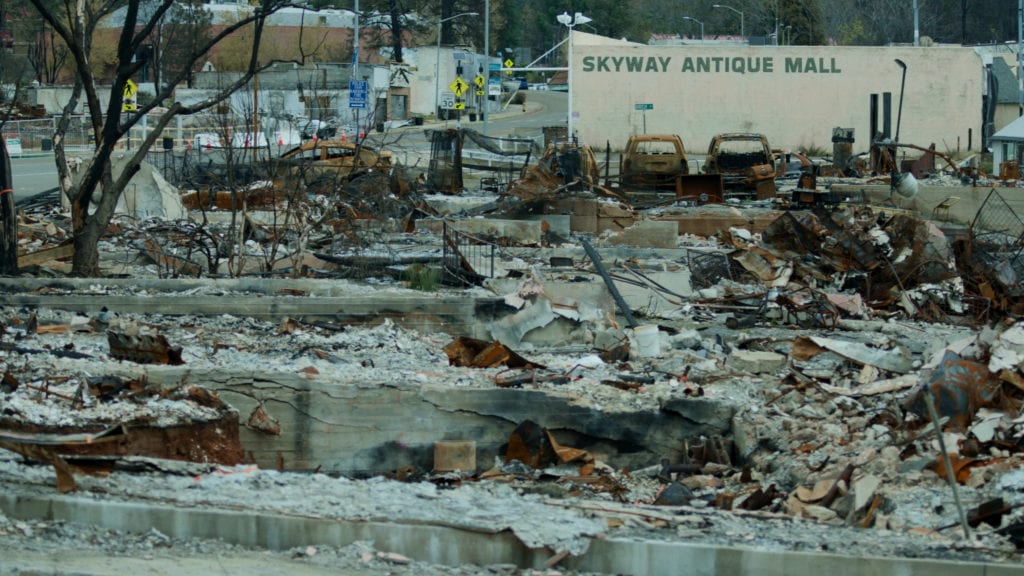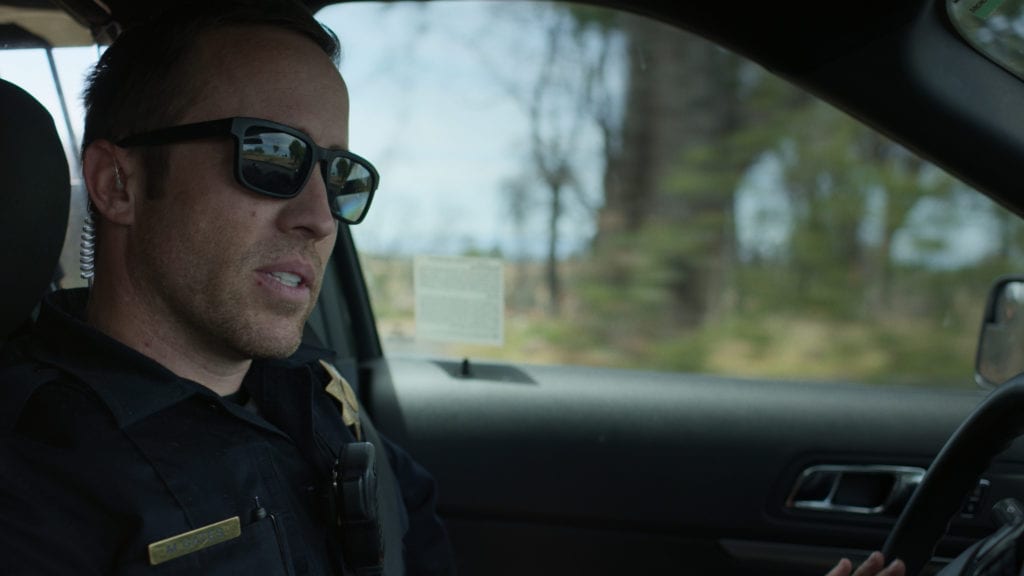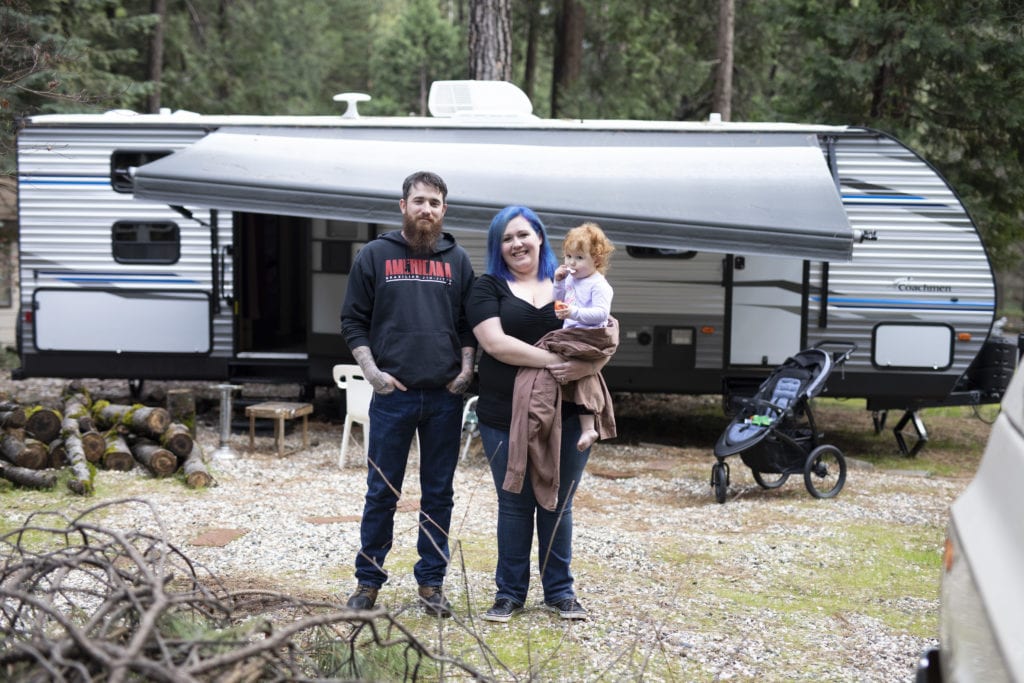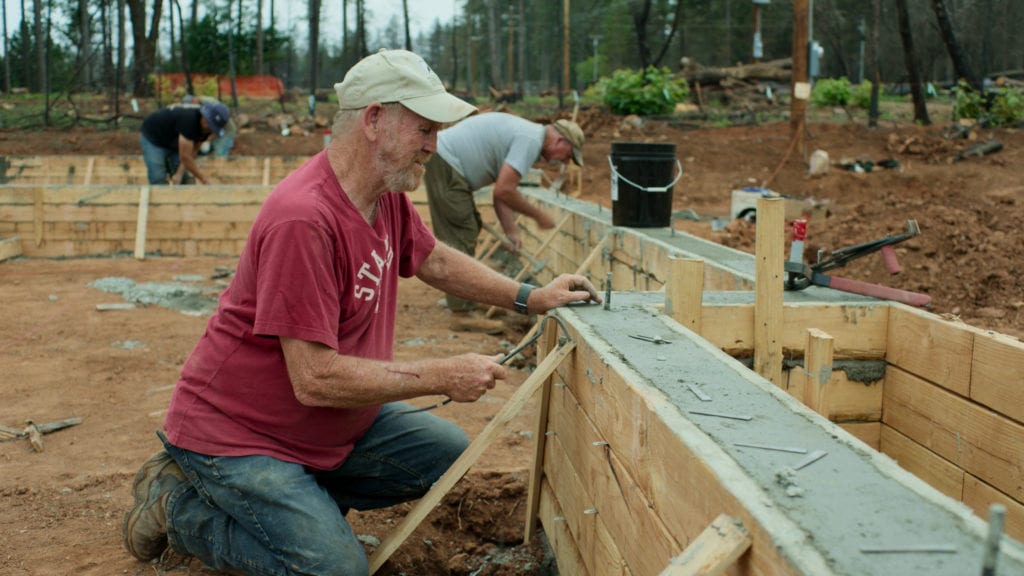Towards the end of Rebuilding Paradise, we see a group of California high schoolers taking up a collection for people in Beauregard, Alabama, where tornados had destroyed the town. Those donating did so out of great empathy, because just one year earlier their town of Paradise was wiped out by a wild fire. That sense of empathy infuses this documentary.

On the morning of November 8, 2018, a spark from a PG&E power line started what became known as the Camp Fire. Within a very few hours, the wind-whipped fire had overtaken the town of Paradise (population 26,500), destroying most of the homes and businesses. People had to quickly evacuate, leaving everything behind. They had to drive through smoke that blocked visibility and fire that surrounded them. The first several minutes of the film (mostly cellphone video) are edited together to create a sense of the panic that residents must have felt.
Over the course of the next year, Howard and his team visit Paradise (and nearby Chico where many of the residents were finding emergency housing). We see the pain, the hope, the struggle through the eyes of a few of the residents: Woody Culleton, who describes himself as the former town drunk who went on to be mayor; Michelle John, the superintendent of the schools; Matt Gates, a police officer who saw his house burning while he was busy rescuing others; and a varied group of others, including young families.

It?s tempting to list the various challenges that the people of Paradise faced throughout the year Howard and his crew were following them, but the film really isn?t so much about that as it is about the people themselves. We get to feel as though they are our neighbor. We recognize them not so much as victims as survivors. That is what the film is finally about: what does it mean to survive such an ordeal.

As I watched the film, I couldn?t help but note parallels to the experience of the COVID-19 pandemic. The experience of the denizens of Paradise is a very concentrated experience of loss and struggle. They face a loss of not just possessions, but of community. They can?t come together as they have in the past. School officials have to figure out how to do school when you have no buildings. Some families left for other towns to provide their children with a sense of normalcy. Little things took on new importance: a Christmas tree lighting, the local ?Gold Nugget Day? parade, an Easter egg hunt amid charred trees, and the high school graduation.
That is why the scene I mention in the beginning of this review struck me as so important. Those high school students were acting as they did because they knew the suffering the people in Alabama were facing?it was the same as they had faced. In a much weaker version, it is what the whole world is facing with the pandemic. And it is a scenario that will repeat again and again in natural and manmade disasters. This film is a reminder of what it means to be a neighbor. The high school collection is how neighbors take care of each other?even neighbors they don?t know.

Rebuilding Paradise is available on virtual cinema through local arthouses.
FilmReviews




